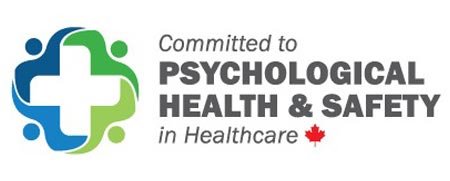There are steps that all organizations can take to help create a mentally healthy and safe work environment, decrease illness and injury, and be fiscally responsible. A comprehensive mental health plan can assist in organizing and addressing these ideas. This section of the Mental Health Toolkit is designed for senior leadership and organizational representatives who want to make a positive change through modern policies and programs.
CSMLS considers the mental health and psychological safety of its employees and members to be as important as other aspects of health and safety. CSMLS is committed to supporting a mentally healthy workplace through appropriate policies, programs, and services.
According to the World Health Organization, there are 5 key barriers for organizations to overcome in order to increase the accessibility of mental health services.
- Absence of mental health from the public health agenda and the implications for funding
- Current organization of mental health services
- Lack of integration within primary care
- Inadequate human resources for mental health
- Lack of public mental health leadership
How does your organization combat these barriers to make a better work environment? Firstly, as an organization, you represent the managers and employees. We suggest that you review these sections of the Mental Health Toolkit to get a better understanding of what the members of your organization may be experiencing. Secondly, the links below will provide tools and frameworks for your organization to implement.
As an exercise to determine whether your management and organization is providing a mentally healthy and safe environment, download this list of questions: Management Standards for Tackling Work Related Stress. Alternatively, you can review these 20 questions:
- Is employee psychological health and safety a stated priority in our organizational policy statement?
- Do people in our organization have a common understanding of a psychologically safe workplace?
- Is our management team familiar with the legal and regulatory requirements and expectations related to workplace mental health and psychological safety?
- What is the cost of stress-related illnesses – both physical and mental – to our organization?
- Is there a system in place to measure the rates of both absenteeism and presenteeism (being unproductive while present at work) in our organization and what percentage of these may be related to psychological health and safety issues?
- What percentage of your disability claims do you believe are related in whole or in part to mental health issues or workplace conflict issues?
- Do our policies align with occupational health and safety, labour law, tort law, contract law, and employment standards with respect to psychological health and safety?
- Is there a process in place to encourage frontline managers to provide a psychologically safe workplace through such measures as performance indicators and evaluation methods?
- Are those whose position includes managing, supervising, or supporting employees, adequately trained, skilled or competent to make sound decisions?
- Do the leaders and management in our organization recognize and respond to conflict in a timely and effective manner?
- Are the leaders and management in our organization trained to identify the difference between a mental health problem and a performance issue?
- Does our organization have a policy on work-life balance?
- Does our organization work to prevent physical, relational or emotional harassment, bullying or aggression?
- Does our organization help prevent discrimination by providing all employees with a basic level of knowledge about mental health issues?
- Do we have crisis response policies and processes in place for issues such as suicide, violence, threats of violence, or emotional breakdowns at work?
- Does our organization have a process allowing for open communications between managers, supervisors, and employees that assist us to address the needs of co-workers who are traumatized by personal or workplace issues?
- Do we have a return to work policy that takes into account the emotional, psychological, and interpersonal challenges and allows union/employee representatives a role to play in the return to work process including having the opportunity to provide input on the return to work process?
- Do we know how to reasonably accommodate those with a mental health disability at work?
- What resources in our organization and/or community exist for employees struggling with mental health issues?
- Is our organization exposed to complaints concerning the duty to reasonably accommodate persons with mental disabilities, which may include mood or anxiety-related disorders?





